05 july 2024, Wouter van den Eijkel
Painting Show: Galerie Ron Mandos
At Galerie Ron Mandos, four presentations are concurrently on display. Abul Hisham, Matias Salgado, Andy Llanes Bultó and Karen Lamassonne are four artists with one foot in Western tradition and the other in that of their homeland.
Several panels by Indian Rijksakademie alumnus Abul Hisham are on view and for which he won the Scheffer Prize earlier this year. Hisham combines deep colours with serene landscapes featuring human figures and religious rituals. His work has an innocent quality to it, as if he were showing us the world through the eyes of a child. A recurring element is a wall painted with a sandy texture that separates one part of the painting from another: a praying boy separated from his mosque and a group of friends from their homeland. It is easy to interpret Hisham's wall as a critique of exclusion and migration policy, but his work speaks to much more than these emotions. In Hisham’s art, all elements of the human condition come into play, from longing and power to faith and memory.
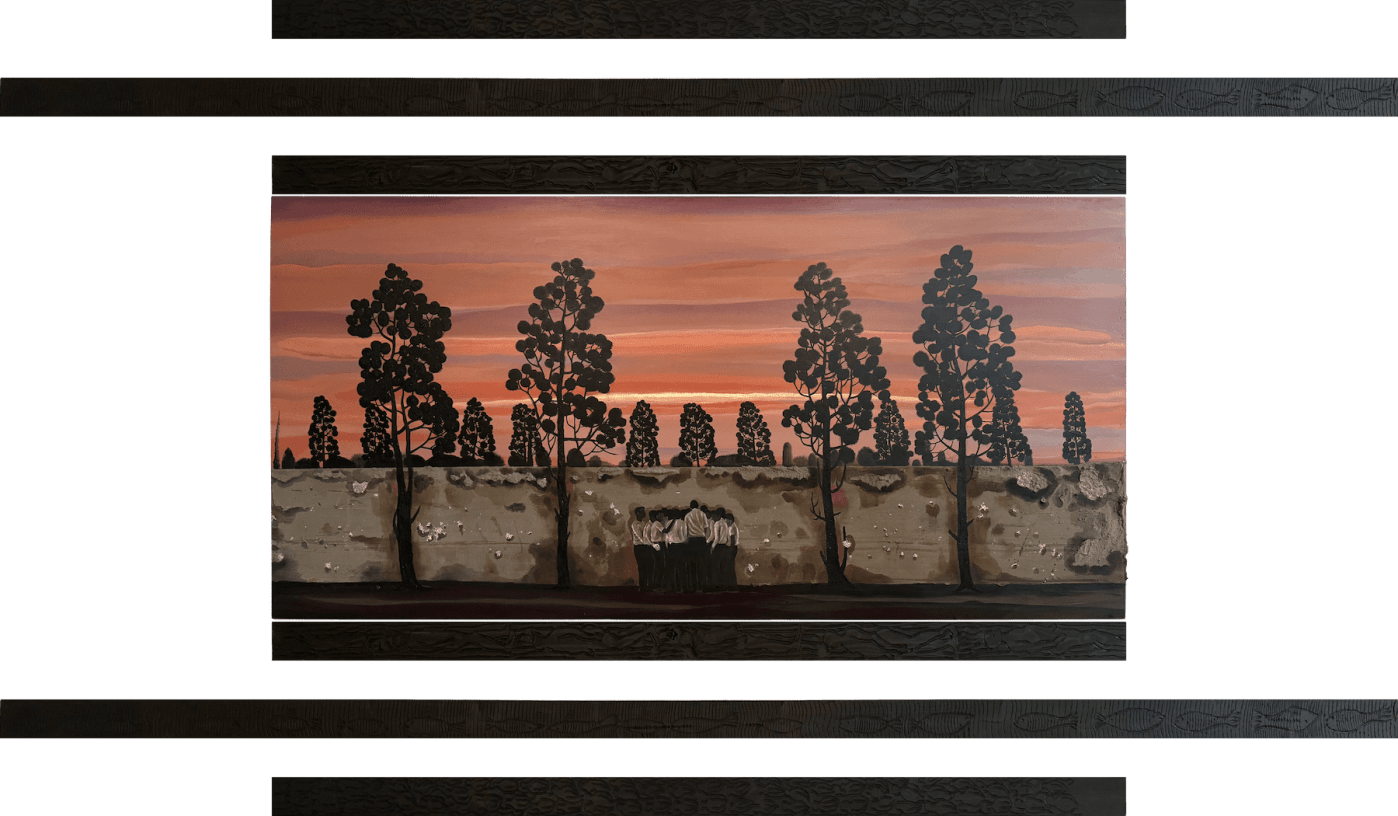
Abul Hisham, Silent Whispers 3, 2024, Galerie Ron Mandos
New work by Matias Salgado, the Argentinian painter who won the Ron Mandos Young Blood Award last year, is also on display. Cuban artist Andy Llanes Bultó lives and works in the U.S., where he links the rich art history of the nude with the use of gold leaf. His depictions are dynamic and his figures seem physically intertwined, as if in a complex choreography. In Cuba, says Llanes Bultó, almost everything is related to dance, a legacy of Spanish colonisation combined with Afro-Cuban culture.
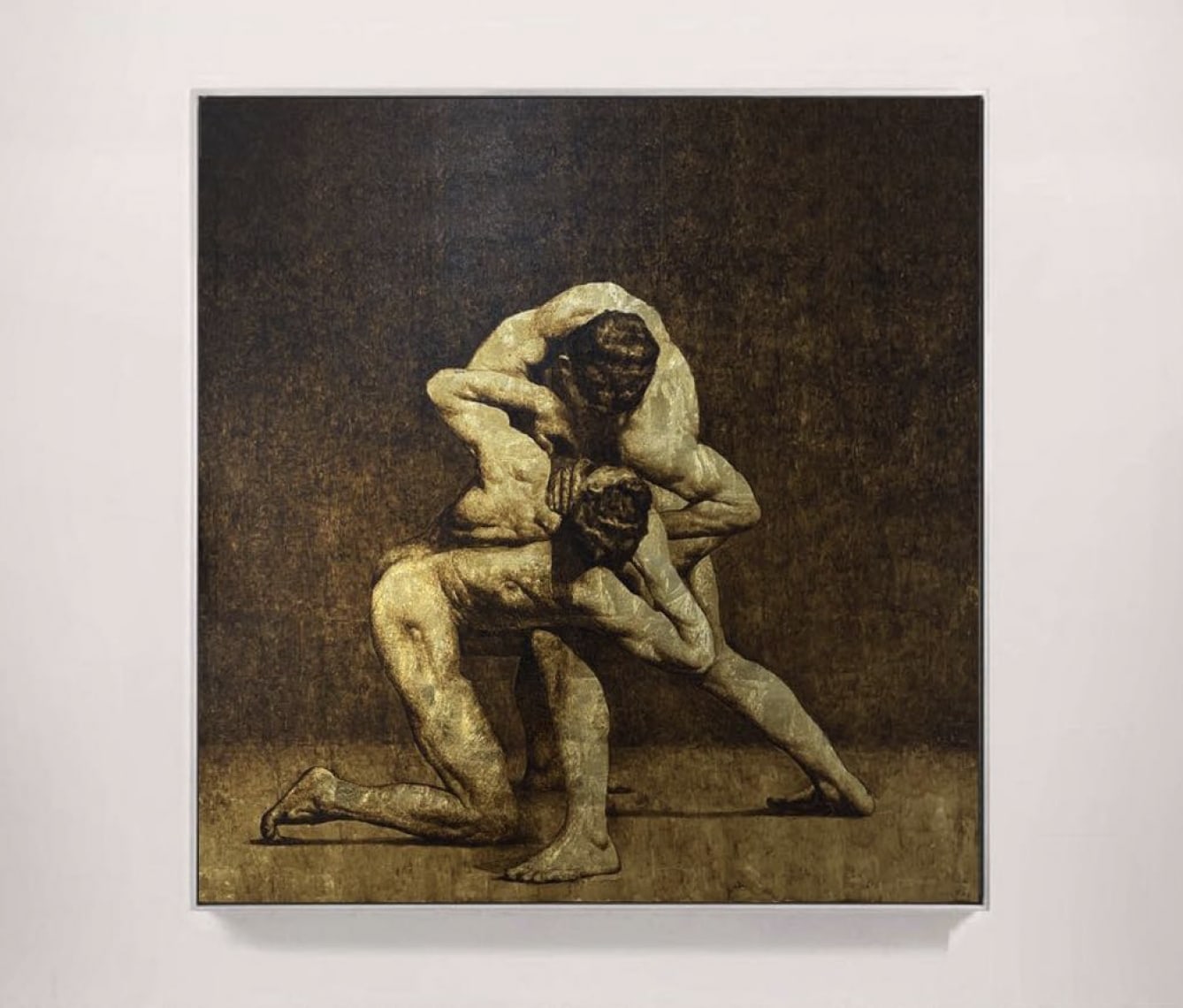
Andy Llanes Bultó, Pillow Fight, 2023, Galerie Ron Mandos
The presentation seen on entering the gallery is by Karen Lamassonne, a Colombian-American artist whose career took off in the late 1970s and whose work has been receiving renewed attention in recent years.
Baños
From a Western perspective, it's hard to imagine that the pair of lower legs exiting a shower over azure and white tiles could cause such a stir in Colombia in the late 1970s that the original watercolour paintings were removed from the wall. Yet it happened. "It's a shame it happened at the beginning of the exhibition because hardly anyone in Cali saw the work," Lamassonne recounts in the gallery about her Baños series. "But the uproar did give my work a sort of stigma when it was later shown in Bogotá and Medellín."
The exhibition in Cali was Lamassonne's first solo show and consisted of around 20 watercolour paintings of bathrooms with fragments of a nude body. The exhibition was held in the Executive Club of Cali, a space used for both art exhibitions and conferences. "I believe the speaker was holding a lecture on insurance. When he noticed that most people in the room were more interested in my work, he said something like, 'I cannot continue with these obscenities around me.'"
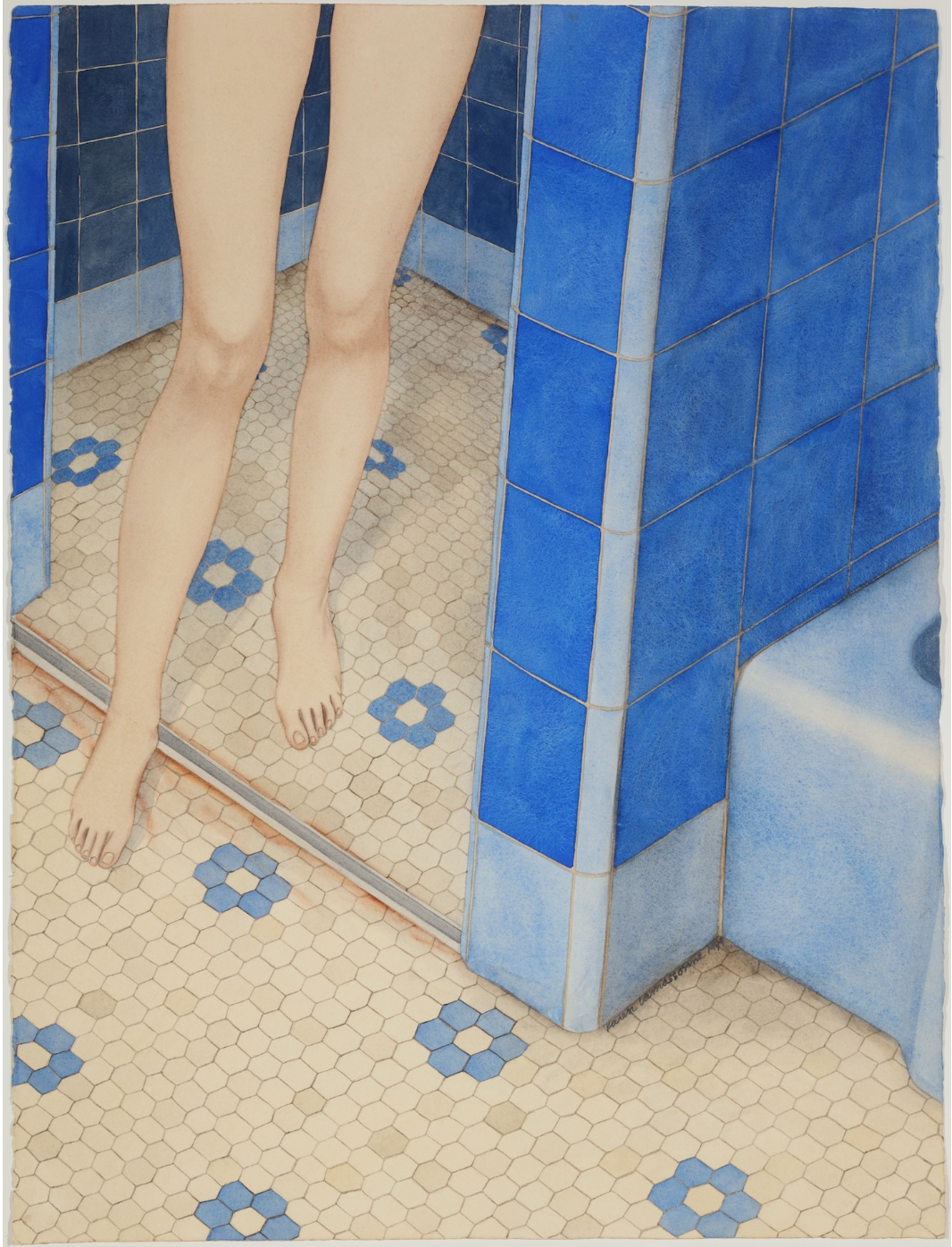
Karen Lamassonne, Baño azul (Blue Bath) (1979), 2023, Galerie Ron Mandos
In the Netherlands of the late 1970s, this comment probably would have had no effect, but it certainly did in Colombia. Lamassonne describes the context as conservative, Catholic, macho and with imposed expectations on women. In a sense, Lamassonne fell outside those expectations, she explains, because she is half-American and grew up in New York in part. In her perception, she was simply making work about her life and surroundings. Nudity was not an issue for Lamassonne. In her eyes, she was merely placing herself within a long tradition. "For many people, nudity makes it erotic or sensual. I grew up looking at art and in art history, everyone was nude. The saints when they were martyred or Jesus on the cross. The human body was something I saw everywhere in art and to me, it was completely natural to use a human body. Moreover, I am a woman, so I painted myself."
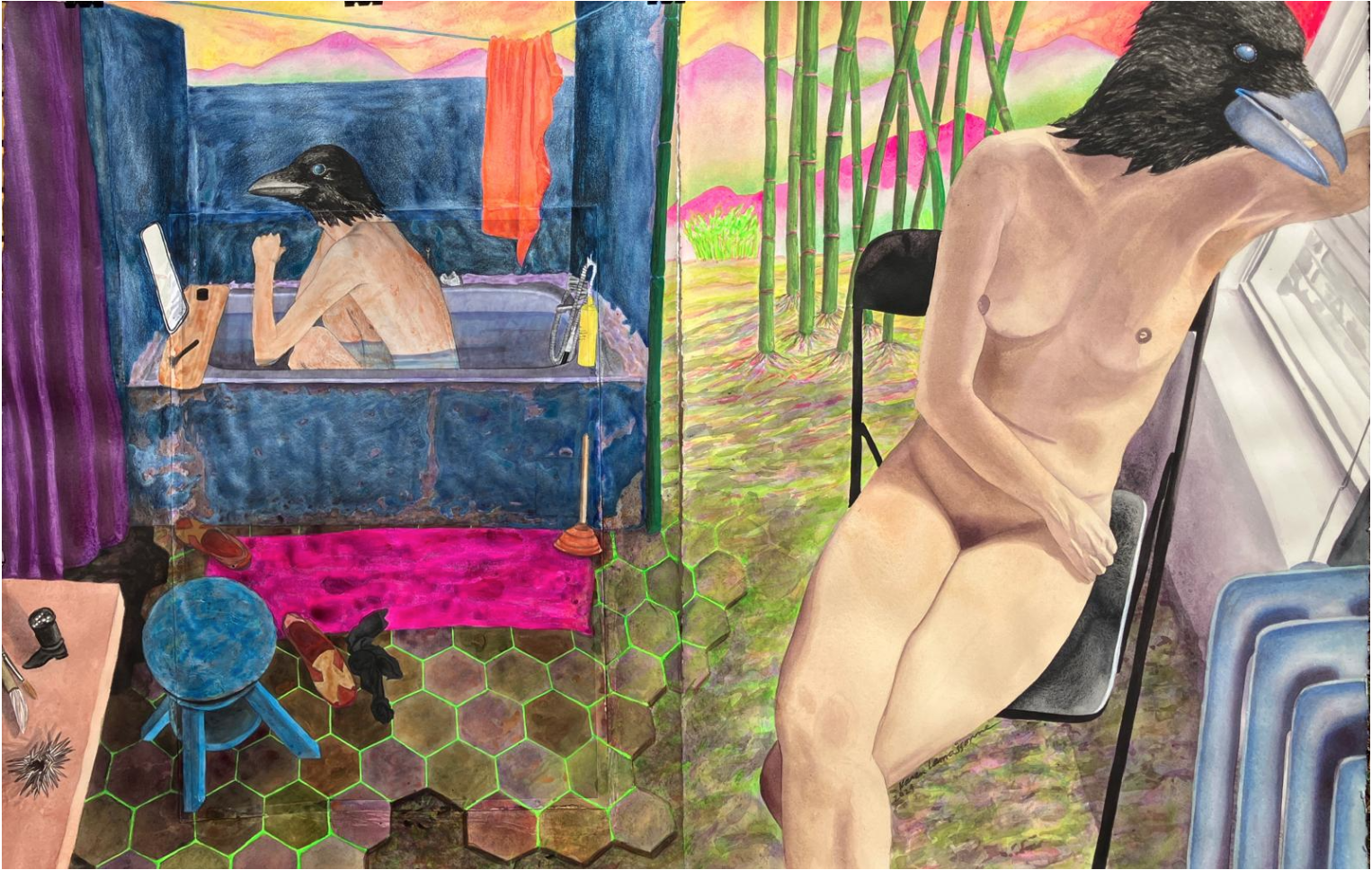
Karen Lamassonne, Fieles (Faithful), 2024, Galerie Ron Mandos
Concise overview
This gallery presentation is essentially a concise overview of Lamassonne's work from the past five decades. The earliest piece is a drawing titled Vuelo (Flight) from 1974. Two hands merge into one, forming the wings of a bird or airplane. This is followed by the Baños series, with several lithographs on display. Recent work and pieces from the 1980s in which she combines photography and painting are also featured. Lamassonne's work returned to the spotlight in 2017 when it was selected for the Radical Women exhibition, a traveling show about Latin American female artists who caused a stir. The exhibition toured to Los Angeles, New York and São Paulo. The work of The Grupo de Cali, of which Lamassonne was a part, is on view this month at the Arles photography festival.
Crow's head
This year, Lamassonne once again created several bathroom scenes, combining photos with fluorescent colours of green, yellow and red instead of sweet pastel hues. "I use a palette with psychedelic colours – I love bright colours that make it all a bit more cheerful. They also give my work a highly imaginative and unreal effect. These colours make it really trippy." This fantasy aspect is also evident in the crow's head she gave her partner in one of the works. "It was a photo of my partner, but he had no head, so I painted a crow's head on top. It felt right. They are intelligent birds."
The statement is typical of Lamassonne's intuitive approach: "I love bringing together elements in a very organic way. Years from now, I may try to figure out what drove me to create this work. I do not want the figures in my work to say anything specific, but prefer to leave it open to the viewer's interpretation."
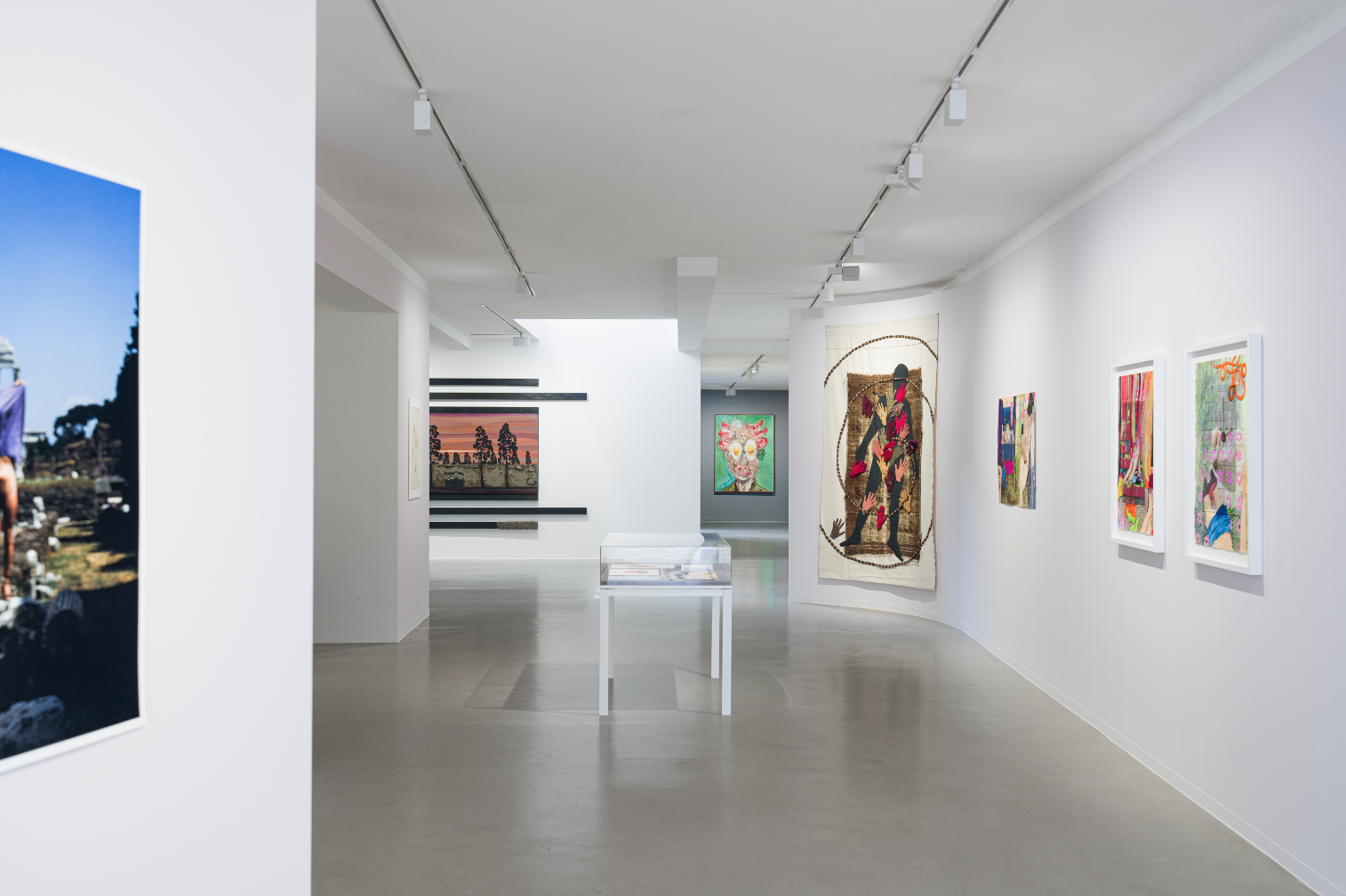
Painting Show, Galerie Ron Mandos. Photo: Jonathan de Waart
